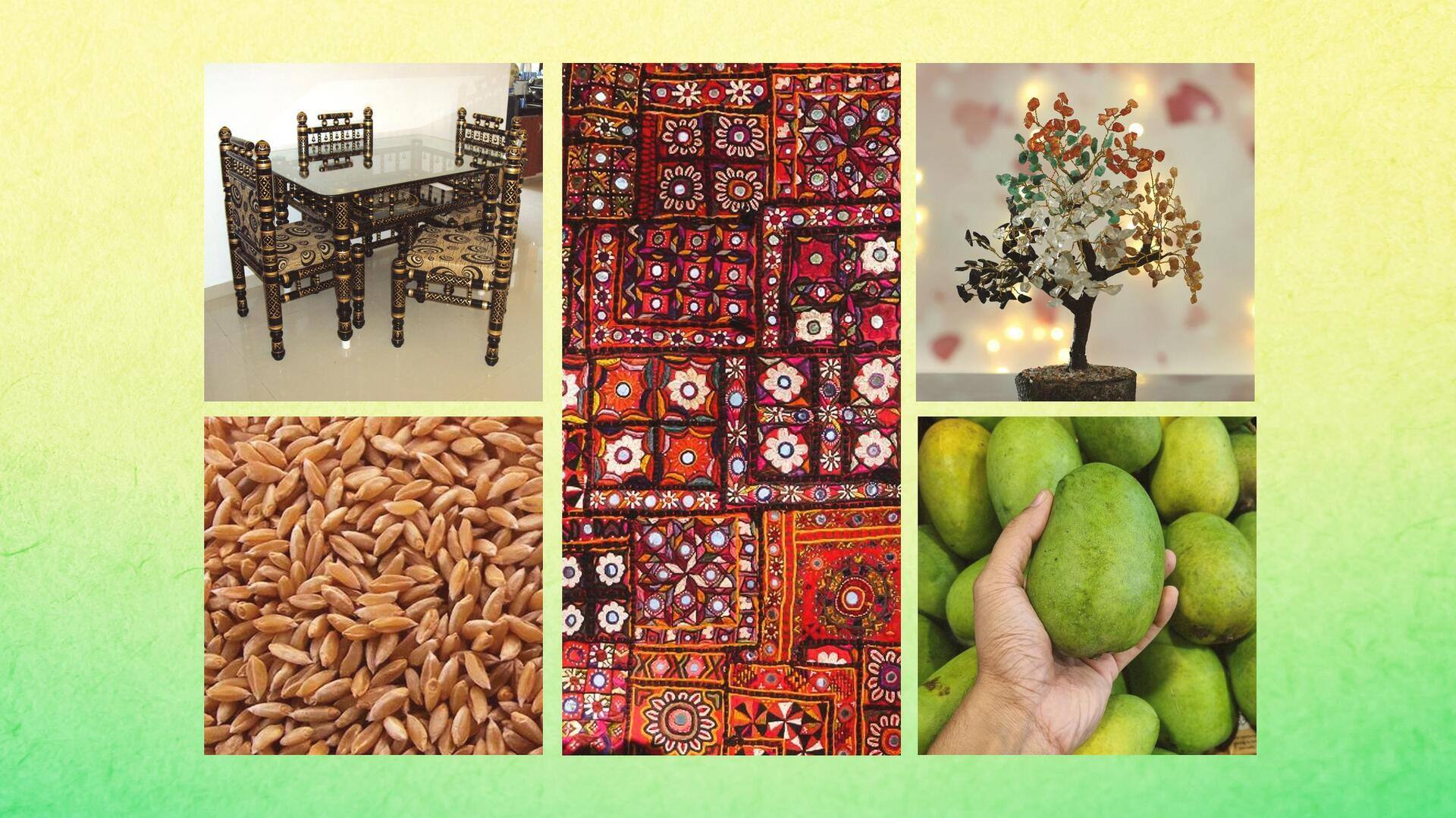
Shop these GI-tagged products from Gujarat
What's the story
Gujarat, known for its rich cultural heritage and diverse traditions, is also home to several Geographical Indication (GI) tagged products. These GI-tagged products are renowned for their distinctive traits, virtues, and attributes that can be traced to their place of origin and conventional production processes. Here is a look at five such distinctive products that you must look for while shopping in Gujarat.
Product 1
Sankheda furniture
Designed by artisans from the Kharadi community, Sankheda furniture is created by turning teakwood on a lathe and chiseling it into the desired shape. It uses a natural glue made from the excretion of microscopic insects that live on lac trees. The wood has floral and geometrical patterns painted on it, and an agate stone is used to furnish it.
Product 2
Bhalia wheat
This GI-certified wheat is characterized by high protein content and a sweet flavor. Ahmedabad, Anand, Kheda, Bhavnagar, Surendranagar, and Bharuch districts in Gujarat's Bhal region are among those where the crop is primarily cultivated. The wheat variety's distinctive feature is that it is grown in Gujarat on about two lakh hectares of agricultural land under a rainfed system without irrigation.
Product 3
Agates of Cambay
The Cambay region in Gujarat is known for its exquisite agate stones. Agate is a type of rock that predominantly consists of micro granular quartz and cryptocrystalline silica, primarily chalcedony. It is distinguished by the variety of colors. Agates can be found in a variety of host rocks, but they are most frequently associated with volcanic rocks and in some metamorphic rocks.
Product 4
Gir kesar mango
A variety of mangoes called Gir kesar is indigenous to Gujarat's Gir region. Also known as "The Queen of Mangoes," Gir kesar gained popularity due to its distinctively sweet flavor and vibrant saffron tint. The mango got its name from the saffron color. Harvested between May and July, it is a top choice due to its flavor, richness, and scent.
Product 5
Kutch embroidery
Originating from the Kutch region of Gujarat, this embroidery contributes to the cultural history of women's embroidered textiles globally. Bright colors, beads, mirrors, and elaborate, lengthy stitching that adorns the entire fabric are characteristics of Kutch embroidery. The fundamental elements of Kutch needlework have been adopted over time by many clans in the area to produce distinctive styles of their own.